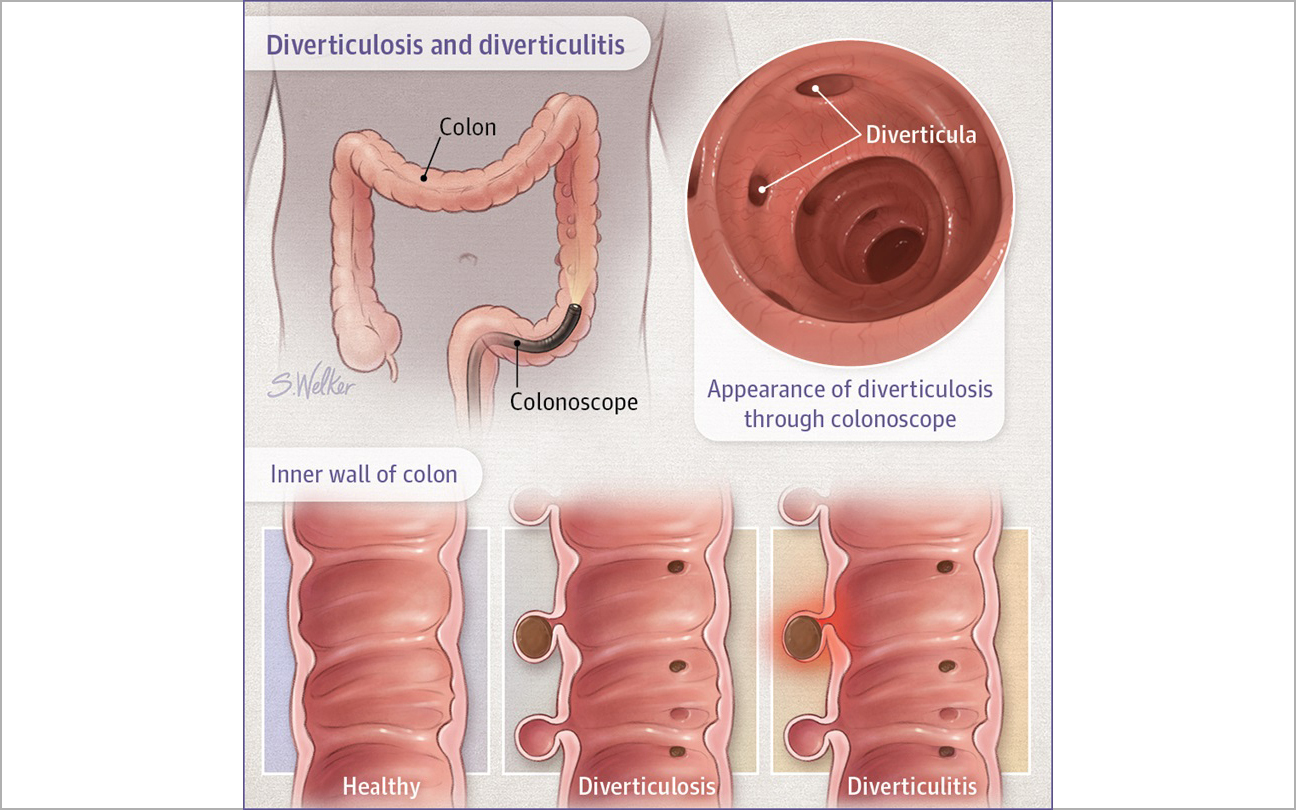Diverticulosis and Diverticulitis

Diverticulosis is a condition in which small pouches (called diverticula) form at weak spots in the wall of the colon.
Diverticulosis is common in older adults, occurring in about half of people between 60 and 80 years old. It affects men and women equally. Scientists do not know what causes diverticulosis. A low-fiber diet may play a role in developing the disease. Another cause might be abnormal contraction and spasm of the muscles in the colon wall. Obesity, lack of exercise, and some medications have been associated with diverticulosis.
Symptoms
Most people who have diverticulosis do not have any symptoms. When diverticulosis causes symptoms, it is called diverticular disease. Symptoms can include constipation, cramps, bloating, and painless bleeding from the rectum. Diverticular disease also includes diverticulitis.
Diverticulitis occurs when diverticula become inflamed or infected. Symptoms include abdominal pain (usually on the left side), fever, nausea, vomiting, cramps, and constipation. Possible complications include
-
Abscess
-
Stricture (narrowing of part of the colon)
-
Perforation (tear)
-
Peritonitis (abdominal inflammation that can occur after a perforation)
-
Fistula (abnormal connection between the colon and the bladder, small intestine, vagina, or skin)
Because it does not usually cause symptoms, diverticulosis is often found when a test such as a colonoscopy is done for an unrelated reason. Diverticulosis and diverticular disease can also be diagnosed with a barium enema (x-ray scan). Diverticulitis is usually diagnosed with a computed tomography scan of the abdomen.
Prevention
Eating foods high in fiber can help prevent constipation and may decrease the risk of developing diverticulosis. High-fiber foods include whole grains and fresh fruits and vegetables.
For many years, doctors recommended that patients with diverticulosis and diverticular disease avoid eating nuts, popcorn, and seeds. Eating these foods was thought to cause symptoms and lead to diverticulitis. A study published in the August 27, 2008, issue of JAMA, however, showed that this is not the case. The study found that eating nuts, corn, and popcorn does not increase the risk of diverticulitis or diverticular bleeding.
The goal of treatment for diverticulosis is to prevent and manage symptoms. Increasing fiber intake by eating foods high in fiber or taking a fiber supplement may help. Your doctor may also recommend medication or probiotics, which are “good bacteria” that are normally found in a healthy intestine. More research is needed to determine if probiotics are effective in treating diverticulosis.
Many cases of mild diverticulitis are treated at home with antibiotics and a few days of a liquid diet. If your symptoms are severe or you have a complication, you may need to be treated in the hospital. Treatment in the hospital might include intravenous antibiotics, bowel rest (no eating or drinking), or surgery.
Surgery may also be an option if you have diverticular bleeding that does not stop on its own or recurrent episodes of diverticulitis.
For More Information
-
National Library of Medicine
www.nlm.nih.gov/medlineplus/ency/presentations/100158_1.htm
To find this and previous JAMA Patient Pages, go to the Patient Page link on JAMA’s website at www.jama.com. Spanish translations are available in the supplemental content tab.

